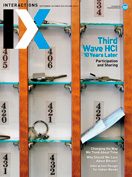Authors:
Simone Barbosa

The Sense of Style By Steven Pinker (2014) I love style guides and books about writing. As a nonnative speaker of English, I'm always on the lookout for a new resource to help me improve my language skills. Having read a few of Pinker's books and watched a couple of his talks for their content, I have also enjoyed his writing style and use of language. With The Sense of Style, we can now get some insight into his writing mind. Pinker debunks several myths widely proclaimed by language sticklers, contextualizing them and resorting to history and examples taken from acclaimed writers to set the record straight. If I had to recommend two books on writing, it would be this one and William Zinser's On Writing, which was also a delight to read.
Pinker debunks several myths widely proclaimed by language sticklers, contextualizing them and resorting to history and examples taken from acclaimed writers to set the record straight.

Lead with a Story: A Guide to Crafting Business Narratives That Captivate, Convince, and Inspire By Paul Smith (2012) Like most people, I have always remembered stories better than facts. Interested in understanding that effect, I have read some of the science on how we are wired for stories. Coming up with good stories, however, is not always easy. Paul Smith makes it seem less challenging by proposing a conceptual framework to craft stories, and illustrating it through myriad examples on diverse themes. His book has helped me develop richer narratives, be it to engage students in a classroom, to write better research reports, or to make the case for integrating user research, interaction design, and user experience activities in a development project.

The Checklist Manifesto: How to Get Things Right By Atul Awande (2009) In the design projects in which I have participated, I have seen that as professionals are increasingly pressed for time and their tasks become more diverse, complex, and information-laden, mistakes due to forgetting a few obvious, routine tasks and verifications are bound to occur more often. I have used this book both as a reminder that sometimes complex problems can be tackled by simple solutions, and for inspiration on how to balance user and system roles in deciding and verifying what has been done and what still needs to be done to achieve their goals, while avoiding information overload. I have also developed a few checklists of my own, which have saved me from overlooking trivial but important task steps more often than I would care to admit.

Constructing Grounded Theory, 2nd Edition By Kathy Charmaz (2014) Kathy Charmaz describes a constructivist perspective to grounded theory, emphasizing that theories are not discovered but constructed by the researchers. In this book, she succeeds in striking a balance between theory and practice, including clear and straightforward descriptions of data collection and analysis procedures (e.g., sampling, interviews, coding, memo-writing, theorizing, and writing the report) as well as discussions of relevant issues to reflect on the research process itself. While preparing some teaching material for my Research Methods class, I am enjoying her work very much. I just hope my students will enjoy it too!
Simone Diniz Junqueira Barbosa is associate professor in the Department of Informatics at PUC-Rio, Brazil. She now believes there is life after being graduate program chair, and is looking forward to upcoming days of full-time research to investigate human-computer interaction issues in coupling data science, visual analytics, and storytelling.
Copyright held by author
The Digital Library is published by the Association for Computing Machinery. Copyright © 2015 ACM, Inc.








Post Comment
No Comments Found